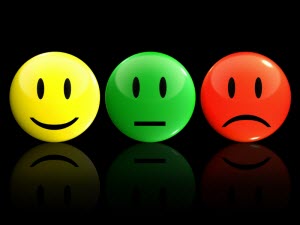
With over 1800 articles in our archives there's a good chance that our ICI/PRO members may have missed some of our best stuff. So every Wednesday we are republishing some our of our favorite articles and podcasts - enjoy!
By Team ICG® Master Instructor Jim Karanas
My last two articles were on video because it will affect our industry dramatically in 2012. Long before video, however, something else inspired us to ride bikes indoors: music. There”™s no denying music”™s powerful impact on the class experience. One way that happens is through emotion.
Music inspires emotion through genre, lyrics, vocals, harmony, tempo, rhythm, and more. But many indoor cycling instructors overlook emotion. It”™s easy to understand why.
I taught my first aerobics class in 1977. Like other instructors at the time, I used popular music and older rock that was good for dancing. Then something happened. Workout Music.
Workout Music used a square rhythm of 32-count phrases, was always high-energy with a fast tempo, was typically dance or house music, and often remixed popular songs by speeding them up and punching the downbeat. Because teaching back then involved 32-count choreography, the energized remixes were useful and called
“aerobicized”.
(An example is “Let”™s Get It Started” by the Black-Eyed Peas. Listen to the original, and then compare the workout mix made popular on The Biggest Loser.)
But while aerobicized mixes kicked up our workouts, they also buried a critical musical element — emotion.
Music stimulates every area of the brain. The emotion it evokes can be life-changing. Everyone has a special song from a special time that they”™ll never forget. Odds are it was not a piece of workout music.
When Indoor Cycling was introduced 20 years ago, it completely reversed the workout-music trend. It was the very nature of cycling that did that. When you ride a bike, the road changes and forces changes in cadence and rhythm. Different music genres and tempi simulate those terrain changes, so “regular” music is back.
Indoor cycling also permits individual interpretation. Since people don”™t have to be doing exactly the same thing at a given time, the movement doesn”™t have to be synced to the music. This Freestyle approach is an effective way to ride to music. You ride more to the nuance or the feeling than to the beat. So emotion”™s also back if we want it.
Emotion is a powerful tool for creating an indoor-cycling experience.
When creating a class profile, you might want to ID your own emotional response to a piece of music so you can use it at the right time. Download and listen to the following songs in the order below and note your response. You may even choose to ride to them.
Distinguish between good music and emotion. Music with a great beat may make you feel like riding, but focus on how you feel (happy, sad, neutral, etc.) if and when you try this.
Slid (Glid) Fluke
L.A. Woman (Single Edit) Billy Idol
This Is Us Mark Knopfler & Emmylou Harris
Stevenson George Winston
Link to this playlist in Spotify
Next week, I”™ll predict how you felt and suggest ways to use emotion in your classes. I”™ll also compare Freestyle and Beatmatch. Freestyle uses music as briefly mentioned above; Beatmatch pairs cadence with the beat and is practiced throughout the world. There are important reasons to bring both to teaching.
John's note: We're highlighting some of Jim Karana's past articles this week.
- Spinning Our Wheels:Can’t We Go Faster? - February 24, 2024
- Still More on Motivation - January 1, 2024
- Differentiation:ICG® Academy Opens in San Francisco - December 23, 2023

Couldn’t agree more……and in my experience, the best instructors know this intuitively and weave it into the class experience. Other great examples are Redemption Song by Moodswings or This Must Be the Place by Talking Heads.
Atta boy Jim. The heart of the class experience is the ability to let your riders move to what they feel. Let’s not forget that the class will draw as much of its energy from the instructor as the music so the music has to work for the instructor first.